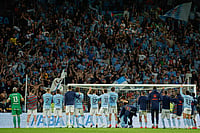Hibatullah Akhundzada became the supreme commander of the Taliban in May 2016, after the previous chief Mullah Mansoor was killed in a US drone attack in May that year. Mansoor was targeted while travelling in a convoy near the town of Ahmad Wal in Balochistan.
Akhundzada now calls the shots in all matters, military, political and religious. But his reputation is not that of a fierce warrior but as reputed Islamic scholar. Like most senior Taliban leaders he fought against Soviet occupation in the 1980’s. But unlike the one-eyed Mullah Omar, who lost his eye while fighting the Russian’s there are no stories of valour attached to his name. He is more of a religious man, and during the Taliban’s first stint in office he was the head of the Sharia Courts. So he will have the last word when it comes to interpretation of the Sharia laws. During the Taliban press conference, when asked about treatment of women under Taliban rule, the answer was they will be respected and treated according to Sharia law. Basically it will depend on the interpretation of sharia laws by Akhundzad. He is said to be in his 60’s and like Mullah Omar before him will be the main power centre and the last word on all issues. He is based in Kandahar, often regarded as the spiritual capital of the Taliban. Mullah Omar, lived here when the Taliban were in power in Kabul till 2001.
2. Mullah Abdul Ghani Baradar: The deputy leader of the Taliban is the most recognised name in the current leadership, mainly because he headed the Taliban’s negotiating team in Doha.
Baradar is one of the four men who founded the Taliban in 1994 and was married to Mullah Omar’s sister. He was second in command to the late Taliban chief and was one of his most trusted commanders. After the US and NATO troops threw the Taliban out of power, Baradar had tried to negotiate the surrender of the Taliban in 2001, but was refused. He then disappeared till he was captured in Karachi in February 2010 in a joint US-Pakistan operation. He was one of the high-value Taliban prisoners closely guarded in a Pakistan jail, where he spent eight years. He was released in 2018, as the Trump administration decided to begin peace talks with the Taliban. In 2019, he became the head of the Taliban’s political office in Doha. Baradar negotiated and signed the Doha agreement with the US.His name is in the running for the top civilian post of president, or whatever else the Taliban may rename the post. His diplomatic skills were at play in Doha and he had visited China for talks with Wang Yi the foreign minister. At a time when the Taliban is eager to engage with the world, he may be the right choice to deal with foreign governments. He is said to be in his 50’s.
3. Sirajuddin Haqqani : He is the leader of a UN designated terrorist group, and is unpopular in India as the Haqqani network is said to be behind the two terror attacks on the Indian embassy in Kabul in 2008. India claims the Haqqani network is close to Pakistan’s spy agency the ISI and is used by them to go after Indian interests in Afghanistan. He is also a deputy leader of the Taliban. His brother too is part of the Taliban and was captured by the US forces in Bahrain in 2014. He flown back to Afghanistan and kept in Bagram prison before being exchanged in a prisoner swap four years later in 2018. Sirajuddin Haqqani is said to be an excellent military commander and was in charge of collecting funds for the Taliban when they were out of power. Said to operate in the area between Afghanistan and Pakistan and responsible for several terror acts.
4. Mohammad Yaqoob: He is the son of the Mullah Omar, and was in the contention to take over the leadership of the Taliban after the death of his father was made public. He has a staunch following within the Taliban cadres mainly as the son of Mullah Omar. But because of his relative youth and inexperience. He is said to be in his early 30’s. He supervises the Taliban’s military action with Sirajuddin Haqqani. Yaqoob is said to have asked the Taliban not to harm members of the Afghan military who lay down their arms or destroy public property.
5. Sher Mohammad Abbas Stanekzai: He was a deputy minister in Taliban01. He has been living in Doha for over a decade and took charge of the political office there since 2015. He travelled to the US, when the Taliban was in power in Kabul to urge the US government to recognise the Taliban. He has been part of Taliban delegations talking to diplomats in Doha and travelled to several countries as part of the Taliban delegation. He took part in the intra-Afghan talks in Qatar. He said to have close links with Pakistan’s Inter-Services-Intelligence.
6. Abdul Hakim Haqqani: He is a trusted aide of Akundzada, the current Taliban chief. Haqqani is the head of Taliban’s negotiating team. He is part of the powerful council of religious scholars that keep the Taliban’s ideology intact. Since the ouster of the Taliban, Hakim Haqqani is said to have lived in Quetta, in Pakistan and headed an Islamic madrassa in the city.















